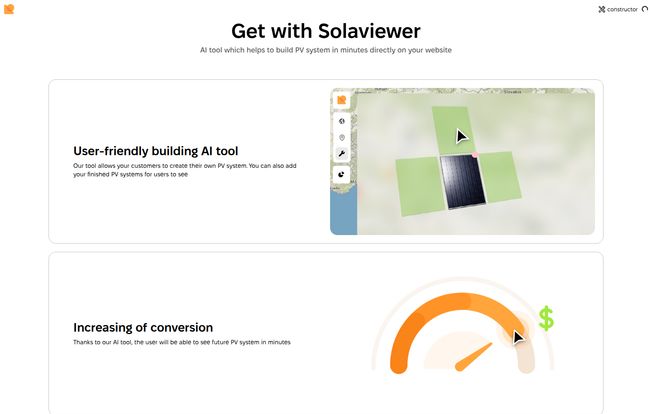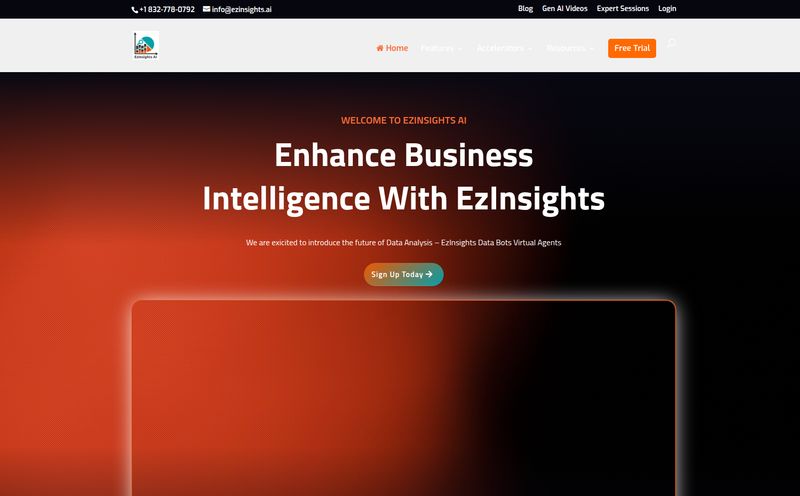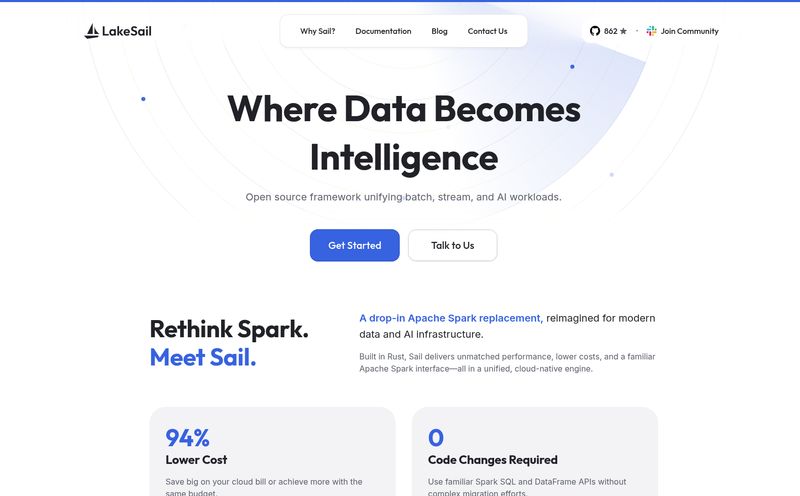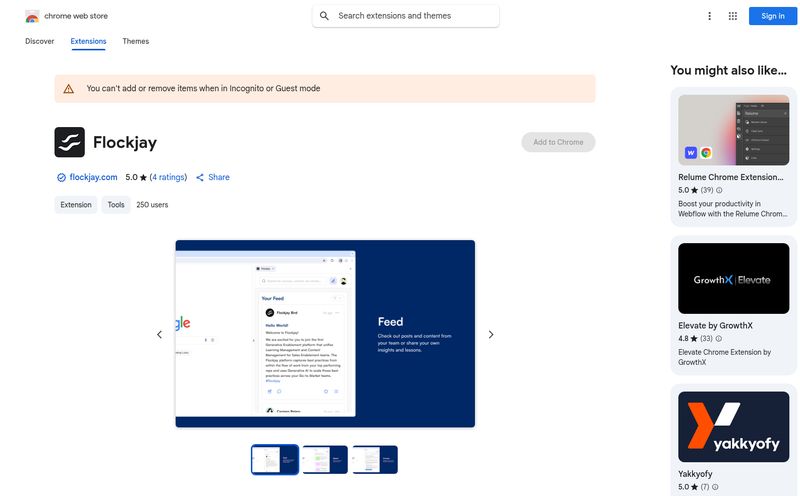For years, the online journey for a potential solar customer has been... well, a bit rubbish. You land on a solar installer's website, get bombarded with stock photos of smiling families, and are funneled toward a button that says “Get a FREE Quote.” You fill out a form, send your data into the void, and wait. And wait. It’s a process as inspiring as watching paint dry.
As someone who's spent more years than I’d care to admit wrestling with conversion rates and traffic generation, I’ve seen a thousand and one “solutions” to this problem. Most are just prettier forms. So, when I stumbled upon a tool called Solaviewer, my initial reaction was a healthy dose of professional skepticism. An AI tool that lets users build a PV system right on your website? In minutes? Sure, Jan.
But the more I looked, the more I felt that familiar tingle of excitement. This wasn't just another form. This felt different. It felt like a conversation starter, a tool that turns a passive visitor into an active participant. It’s like handing someone the keys for a test drive instead of just showing them a brochure. And in the world of SEO and user engagement, that’s pure gold.

Visit Solaviewer
So What Exactly is Solaviewer? (And Why Should You Care?)
At its core, Solaviewer is a clever piece of software—a widget, really—that you embed on your company's website. It presents your visitor with a map of their own property (think Google Maps) and gives them a simple, almost game-like interface to start placing virtual solar panels on their roof.
They aren’t just dropping random squares, either. They can tweak all the important stuff. The power output, the tilt angle of the panels, the azimuth (the direction they face), even the spacing between rows. As they make these changes, the tool gives them real-time feedback on the system’s projected power and estimated price. In a few minutes, a curious homeowner goes from “I wonder about solar” to “Wow, a 10kW system on my roof could generate X power and cost around Y.”
This completely flips the script. You’re not demanding their information in exchange for a vague promise of a quote. You’re giving them a powerful, personalized sandbox to play in. You're giving them value first. The lead generation comes after you've already wowed them.
More Than Just a Pretty Map: The Features That Matter
Okay, it looks cool. But as we know in the marketing biz, cool doesn’t always pay the bills. So let's break down what's actually going on under the hood.
The AI-Powered Design Sandbox
The user-friendliness is the first thing that stands out. It's not some intimidating CAD software. It feels more like you're playing a light version of SimCity, but for your own home. This accessibility is critical. You're not asking your customers to be engineers. You’re empowering them to visualize a dream. This simple act of creation builds a surprising amount of investment and ownership over the project before they’ve even spoken to a sales rep.
Instant Gratification with Real-Time Data
This, for me, is the secret sauce. The little sliders for Power, Tilt Angle, and Azimuth Angle are fantastic. Every time a user nudges a slider, the “Yearly power” and “Price” figures update instantly. This is a powerful psychological feedback loop. It answers their immediate questions and encourages them to keep experimenting. “What if I used fewer, more powerful panels?” Slide. “What if I faced them a little more to the southwest?” Slide. This is a world away from the static, one-and-done quote form.
Peeking Behind the Curtain: User Analytics
Here’s where it gets really interesting for the business owner. Solaviewer doesn't just entertain your visitors; it spies on them (in a good way!). The backend shows you analytics on user interactions. You can see how many people are using the tool, the systems they’re designing, and their contact info if they choose to submit their creation.
Imagine your sales team calling a lead and saying, “Hi John, I see you designed a 8.5kW system on your roof facing southwest. That’s a great starting point, let’s talk about how we can make that happen.” That’s not a cold call; that’s a warm, informed follow-up. You're entering the conversation with an incredible amount of context. It’s the difference between asking “Do you want to buy a car?” and “I see you test-drove the red convertible, shall we talk numbers?”
How Solaviewer Could Reshape Your Sales Funnel
The traditional solar sales funnel is leaky. You spend a ton on CPC ads to drive traffic, a huge chunk of that traffic bounces, and a fraction fills out your form. Of that fraction, many are just idly price-shopping with little real intent. It’s a numbers game, and it’s expensive.
A tool like Solaviewer changes the entry point. The call-to-action is no longer the boring “Get a Quote,” but the exciting “Design Your Own Solar System.” It’s an invitation to engage, not a demand for data. The people who spend five or ten minutes designing a system and then submit it are, by definition, much more qualified leads. They’ve invested their time, they’ve educated themselves on the basics, and they’ve moved from passive curiosity to active consideration. The lead quality goes way up, which means your sales team can spend less time chasing ghosts and more time closing deals.
Let's Be Real: The Potential Sticking Points
No tool is perfect, of course. I wouldn’t be doing my job if I didn't point out a few areas where you might want to pause and think.
First, the provided info mentions that fully utilizing the tool may require some technical knowledge. This is a bit vague. Does it mean you need a developer on hand for a complex API integration, or does it just mean you need to know your way around a WordPress plugin? For smaller solar companies without a dedicated web team, this could be a hurdle. I’d want a clear answer on the implementation process before signing up.
Second, there seems to be limited information on specific solar panel models or brands within the tool itself. On one hand, this keeps the interface clean and prevents overwhelming the user. It keeps the focus on system size and output, not brand wars. On the other hand, a customer who has already done their research and wants to price out, say, REC or Qcells panels specifically, might be a little frustrated. It’s a trade-off between simplicity and specificity.
The All-Important Question: What's the Price?
Ah, the million-dollar question. Or, hopefully, a lot less than a million dollars. Here’s the tricky part: Solaviewer’s pricing isn’t publicly listed on their website. I clicked on what I thought would be a pricing page and was greeted with a good old-fashioned 404 error. Whoops.
This isn't uncommon for B2B software, especially for a newer tool. They likely want to talk to potential customers to understand their needs before quoting a price. I’d speculate it’s a SaaS model—a monthly or annual subscription fee, perhaps tiered by website traffic or number of leads generated. It could also be a one-time setup fee. Without official info, it's impossible to say. The only way to find out is to email them at their listed address: [email protected]. Tell them an SEO blogger sent you, maybe they'll give you the inside scoop.
My Final Take: Is Solaviewer Worth a Shot?
Despite the pricing mystery and a couple of open questions, I’m genuinely optimistic about Solaviewer. In an industry that desperately needs to improve its online customer experience, this tool is a massive step in the right direction.
It’s an engagement engine disguised as a calculator. It educates customers, builds their confidence, and hands your sales team leads on a silver platter—leads who are not just names on a list, but active participants in their own solar project.
If you're a solar installer feeling the pinch of high CPCs and low-quality leads, a tool like this could be a game-changer. It's an investment in a better user experience, and in my experience, that is an investment that almost always pays off. It might not be for everyone, but for the forward-thinking solar biz looking to get an edge, Solaviewer is absolutely worth investigating.
Frequently Asked Questions about Solaviewer
- 1. What is Solaviewer in simple terms?
- It's an interactive tool you can add to your solar company's website. It lets visitors use a map to design their own solar panel system on their roof and see its potential power output and cost in real-time.
- 2. Who should use Solaviewer?
- Solar installation companies and retailers who want to increase user engagement on their website and generate higher-quality, better-informed sales leads.
- 3. How does Solaviewer help increase conversions?
- By replacing a boring "Get a Quote" form with a fun, interactive design tool. This engages visitors for longer, educates them, and gets them invested in a potential project. When they finally submit their information, they are a much warmer lead for your sales team.
- 4. Is Solaviewer difficult to set up on a website?
- The documentation suggests it might require some technical skill. It's likely more involved than a simple copy-paste, so you might need help from a web developer for the initial integration. It's best to contact their support for specifics.
- 5. Can I show my specific inventory of solar panels in the tool?
- Based on the available information, the tool seems to focus on system parameters like power and tilt rather than specific brands. This keeps it simple for the user, but may not be ideal if you want to showcase particular models. This could be a customization option, however.
- 6. How much does Solaviewer cost?
- The pricing is not publicly available on their website. You will need to contact the Solaviewer team directly to get a quote based on your business's needs.
Conclusion
So, there you have it. Solaviewer isn't just another shiny object in the ever-growing pile of marketing tech. It's a thoughtful tool that addresses a real pain point in the solar industry's customer acquisition process. By shifting the focus from taking information to giving power—literally—it has the potential to transform your website from a static brochure into your hardest-working salesperson. It’s a smart play, and I for one will be watching to see how they grow.



